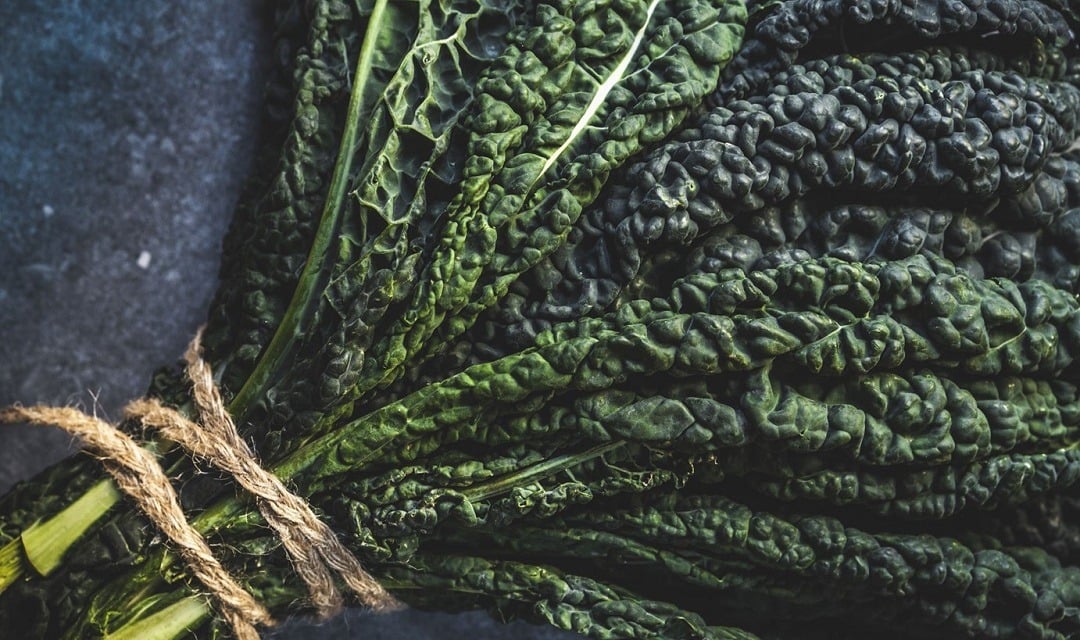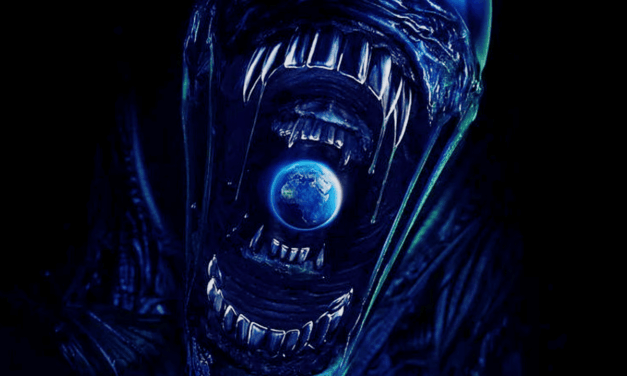The following article was an Online-exclusive. For the purposes of academic citation, it would be considered part of Issue 43 No. 01.
Leave us a tip. A tip is just a small amount, like $3 or $5, which is the cost for some of a latte, lunch out, or coffee drink. To leave a tip, click here.
A New Kind of Veggie Tale1
Once upon a time, Veggie Tales was an entertaining effort in animation to teach children about virtue and faith. In addition to their “silly songs” and off-beat characters, Bob the Tomato and Larry the Cucumber attempted to guide kids with biblical lessons and character sketches. It may have been a bit fluffy and superficial, but since the mid-1990s, a more pernicious, heretical version of Veggie Tales has sprung up.
PETA (People for the Ethical Treatment of Animals) ran a billboard campaign in 1999, claiming that Jesus was a vegetarian.2 If Bob and Larry could invoke the authority of Jesus, why not PETA? Well, at least Bob and Larry tried to draw out truths from Scripture. PETA, however, was imposing a vegan agenda on the Scriptures. After all, PETA’s founder Ingrid Newkirk wasn’t exactly affirming the image of God and human uniqueness when she claimed, “A rat is a pig is a boy is a dog.”3 In this and most other attempts to elevate animals, the result is a diminished human status. They must increase, and we must decrease.
With growing fervor and more resolute political activism, some Christians and various denominations have taken up the banner of “prescriptive Christian vegetarianism.” That is, Christians are duty-bound (“prescriptive”) to adopt a plant-based diet and avoid eating meat of any kind (“vegetarianism”). Of course, some “vegetarians” might eat fish, eggs, or dairy products. However, the stricter “veganism” rejects meat of any kind.
Invoking theological reasons for veganism has become a moral and spiritual cause. Charles Camosy, professor of Christian ethics at Fordham University, claims that animals were created to be companions to humans — not the food of humans.4 In his zeal to defend this notion, he presumes an authority that supersedes that of the meat-eating apostle Paul: “Not everything that Paul says in his letters is inspired by God.”5 For Camosy, eating only plants is to be truly “pro-life.”
Another “veggie tale” comes from philosopher Daniel Dombrowski, who sits on the advisory board of the Christian Vegetarian Association. This group of Christians seeks to “respectfully encourage healthy, God-honoring plant-based nutrition.” Dombrowski goes beyond this, though. Not only does eating meat dishonor God. To view humans as the “crown of creation” is to denigrate animals.6 This pernicious tale gets even worse. Dombrowski denounces Jesus for mistreating animals. After all, Jesus allowed the 2,000 swine to be hurled into the sea (Mark 5) — though this was, in fact, the result of demonic activity.7 Even so, apparently one rescued human being isn’t nearly worth that many pigs. We have to ask: when Jesus and Paul are dismissed in such fashion, why bother with the label “Christian”?
As it turns out, this misguided vegan compassion isn’t Christian at all. It actually borrows from pagan beliefs, which often advocate reincarnation or similar views that blur the animal–human distinction. And to turn personal dietary preferences or even convictions into duties for all defies the spirit of Scripture. Let’s briefly look at Scripture — at the image of God as well the broader biblical perspective on meat-eating.
The Image of God, Animals, and Culture: Human Exceptionalism
If nature is all the reality there is (“naturalism”), why think that anything — whether humans or animals — has value at all? Why think value should emerge from valueless, mindless, non-rational, impersonal processes? If someone believes animals have objective value, then a worldview like theism — a personal, good God who creates the world and makes humans in his image — stands a better chance for grounding that value than does naturalism.
That said, animals do not have intrinsic rights because they don’t have the requisite “stuff” to be moral beings — free will, conscience, moral duties, rationality, spirituality. Thus, in the absence of these capacities (and mere pain-experience is not one of them), they don’t possess rights.8 If they really did have those rights, we should make efforts to prevent lions and cheetahs from eating gazelles and zebras. In 1996, Wes Jamison — coeditor of What Would Jesus Really Eat? — conducted a large-scale survey of animal-rights and animal-welfare activists. Over 90 percent believed animals have reasoning abilities along with moral capacities to make moral choices. However, they pointed out that animals could never make immoral or evil choices!
By contrast, Scripture affirms human uniqueness (“exceptionalism”). While we are fellow creatures with the animals, the image of God serves to ground human dignity, worth, rights, moral obligation, and personal responsibility for humans. As God’s image-bearers, humans have the calling to be stewards or caretakers with God over creation (Genesis 1:26–28). Abusing animals — and thus our very stewardship of animals — is a deviation from that vocation (Deut. 22:1–4, 6, 10; 25:4; Prov. 12:10; Jon. 4:11). But the responsibility not to abuse animals doesn’t mean animals have rights. Consider how trees don’t have intrinsic rights, but that doesn’t mean we are free to raze beautiful sequoia or redwood forests, which would be a misuse of our stewardship.
Meat-Eating, Pets, and Culture
Since 98 percent of Americans don’t live on farms, the closest we come to farm life is owning pets, which have a kind of “honorary family member” status. But, a PETA friend may reply, “If you eat animals, then why not eat your pet dog or cat?” The assumption is that if we feel repulsed by eating Lassie or Fluffy, then we shouldn’t eat pork or beef either.
There is no inconsistency here, however. Preferring cattle meat over cat meat is a matter of cultural preference or taste. We find certain foods more palatable or appealing than others. We might enjoy chicken or pig, but not necessarily chicken feet or pigs’ feet. We’ll eat beef but not be inclined to join the ogre Shrek in eating Swamp Rat Stew. People in some parts of Asia, though, would consider eating Lassie to be a nice addition to their meal. (They would be asking, “How much is that doggie in the window?” for a different reason.)
In previous generations, Westerners used to be much more proximate to their dinner. On a frequent basis, our ancestors would go out to the barn or field to slaughter a sheep, chicken, or pig for the family meal that night. Today, we (sub)urbanites are quite far removed from this practice. So it’s no wonder that some city-dwellers are troubled by Paul McCartney’s acclaimed assertion, “If slaughterhouses had glass walls, we’d all be vegetarians.” Most of us are far removed from the source of our food and so would feel squeamish or even morally uneasy about killing animals in a slaughterhouse. But remember that not everyone feels this way. Some have no qualms about killing animals, and they do no damage to their conscience when engaged in such by working in a slaughterhouse. Compare this to those who don’t have the stomach to fight in a war, even though the cause is a just one. Those with a tender conscience shouldn’t engage, but those with a sturdier conscience can rightly engage in battle — or serve on a police force.
Should we “eat compassionately” by avoiding meat products from intensive animal farming (“factory farming”) or large-scale fishing? Of course, any principled meat-eater would agree that we should take care to avoid overfishing and depleting resources. But humans are finding more and more efficient ways of providing abundant tasty, nutritious meat products for multitudes — especially in the hog farming industry. Even caged chickens have a more stress-free life than stressed, free-roaming chickens, which have to contend with a literal “pecking order.” The more significant question is whether animals are moral, rights-bearing beings. Scripture, reinforced by some good philosophical reasons, indicates that they are not.
Consider: if nature is all the reality there is (“naturalism”), and everything is the product of mindless, valueless material processes, why think that anything of value—whether humans or animals—should emerge from all of this? But if a good God exists and that God desires to relate to human beings, then the appearance of valuable rights-bearing humans is unsurprising. But why expect value and dignity to arise from the slime of valuelessness? If atheists hold to animal rights, they will be borrowing objective moral value from a view like the biblical faith — a view that happens to support human rights but not animal rights. It is this supremely valuable God who is the basis for intrinsically valuable rights-bearing human beings who are called to rule the creation with God.
When the naturalist/atheist considers “animal abuse” to be “evil” or “wrong,” where does such a standard come from in a God-less universe? After all, evil is a departure from the way things ought to be. But this presupposes a design plan, from which evil is a deviation. If nature simply is, why think anything ought to be a certain way? To call something evil presupposes a standard of goodness or design. The atheist or naturalist then has two problems to deal with: the problem of evil and the problem of goodness. It’s hard to see how one could ground goodness (and evil) if nature is all the reality there is.
What Would Jesus Really Eat? The Old Testament, Jesus, and Meat
So what would Jesus say about all of this? What would He really eat — or at least bless and approve? Jesus embraced the Old Testament’s outlook, which commended meat-eating as a blessing from God. For example, Deuteronomy 14:26 reads, “You may spend the money for whatever your heart desires: for oxen, or sheep, or wine, or strong drink, or whatever your heart desires; and there you shall eat in the presence of the Lord your God and rejoice, you and your household.”9 God had allowed the Israelites to “slaughter and eat meat within any of your gates, whatever you desire, according to the blessing of the Lord your God which He has given you; the unclean and the clean may eat of it, as of the gazelle and the deer” (Deut. 12:15; cf. v. 20). Furthermore, Israel’s sacrifices provided meat for priests (Lev. 6:29; 7:6). God Himself provides for Elijah to eat “bread and meat” from the ravens he sent (1 Kings 17:4, 6).
Jesus Himself certainly ate Passover lamb, provided fish for the multitudes as well as for His own disciples after His resurrection. He even spoke of killing the fattened calf in celebration of the prodigal son’s return (Luke 15). In his teaching, Jesus also “declared all foods clean” (Mark 7:19). So even if Jesus wouldn’t have eaten (nor wanted to eat, for that matter) non-kosher foods like pork or shrimp during His earthly ministry, He opened the way for God’s people to enjoy all kinds of meat. Indeed, nothing is unclean or non-kosher in itself (Rom. 14:14).
In principle, absolute prescriptive vegetarianism (meat-eating as inherently unspiritual) is not Christian, and it is not even remotely supported by Scripture. Indeed, it is anti-Christian — teachings that stem from anti-gospel “elementary principles of this world” (Col. 2:16–23) and “doctrines of demons” (1 Tim. 4:1–5).
Vegetarianism, Meat-Eating and the Original Creation
Some will claim that eating meat is a result of the Fall. Originally, humans ate only plants (Gen. 1:29–30) but ate meat only after the flood (Gen. 9:3). Actually, while the diet of all humans and animals is ultimately plant-based, we must remember that God created the food chain from the outset. Human death — not all death — came as a result of sin, as Romans 5 indicates (Adam’s “transgression” brought “condemnation” to human beings). When God says to “rule over the fish of the sea” (Gen. 1:26), what could this mean except to eat them?
Also, other Old Testament passages make clear that God’s original creation involves predatory activity. Psalm 104 — a creation psalm — indicates that God graciously provides prey for the lion (v. 21). And God the Creator takes away the breath of animals, and they die and return to the dust (v. 29). Yet all of his creatures have food, and they are “satisfied with good” (v. 28). Notice that this is the same word good (tob in the Hebrew) that is used in Genesis 1. The food chain isn’t viewed as an evil, according to Scripture.
The book of Job reinforces this “creational food chain” theme. God affirmed to Job that he created dangerous carnivorous animals! This includes the hawk, which brings bloody morsels to its nestlings, which “suck up blood” (Job 39:26–30). God also mentions the “fierce” Leviathan (crocodile) with “fearsome teeth” (41:1, 14). God refers to “prey for the lion” and lions that “crouch in their dens” and “lie in wait in their lair” (38:39–40). God even “prepares for the raven its nourishment” (39:41): ravens are omnivores, and they eat mostly meat.
Old Testament scholar John Goldingay comments,
Genesis’s readers know that the animal world does not live in harmony but lives on the basis of dog eat dog. Genesis 1 implies that this is not God’s intention, but neither is it simply the result of a human “Fall.” Animal inclination to kill and eat other animals is built into their nature as animals and is part of the “goodness” of creation, yet holding them back from doing that [i.e., for humans] is part of humanity’s vocation.10
So, the goodness of creation doesn’t imply its perfection or completion (Rom. 8:19–23). Humans still have the task to “tame” or “keep back” (kabash) the forces of nature (see Gen. 1:28).11 As we’ve seen, to “rule” over certain animals suggests the possibility of “eating.” This all fits what 1 Timothy 4:3–4 indicates: humans are permitted to eat anything of God’s good creation, and we must do so with thankful hearts.
Meat Eating and the New Creation
Not only is meat-eating a blessing in the first creation; it is also a blessing in the second creation — the new heavens and new earth. Isaiah looked forward to feasting on meat in the new heavens and earth: “a lavish banquet … a banquet of aged wine, choice pieces with marrow” (Isa. 25:6–8). This meat-eating is to take place in that permanent future “Golden Age” in which there will be no harm or danger.
What then is the point about carnivores eating straw or the lion being together with the lamb — as well as other pairings of wild and domesticated animals (Isa. 11; 35; 65; and 66)? We have reasons to think that this language about the new creation shouldn’t be taken literally, let alone think that this is a “return to Eden.” After all, we read that a person who dies at the age of one hundred will be “accursed” and considered a mere youth (Isa. 65:20) — and this is in the new heavens and earth! Of course, this is a metaphorical way of referring to longevity — something like “We’re going to live an incredibly long time during this final age.” Similarly, rather than speaking of permanent vegetarianism, such texts are merely referring to danger-removal or the domestication of all possible danger. And so a nursing child can play by a cobra’s nest without fear (Isa. 11:8). In other words, we should be careful about pressing the lion-and-lamb imagery too far. After all, Isaiah 35:9 states, “no lion will be there” in the final creation! The point is that there will be “no evil or harm” in all God’s holy mountain (Isa. 65:25).
But what about those who insist, “We shouldn’t harm animals by eating them since the new creation will be a no-harm zone”? There are four problems here. First, after Jesus’s bodily resurrection (the new creation’s beginning), He nevertheless ate fish (animals) in this new, glorified condition! Second, if we follow that logic of “let’s stop eating meat now,” then we should forbid marriage as well. We can ask, Since marriage won’t be part of the new heavens and new earth either (Mark 12:25), why even get married? Shouldn’t we begin living the alleged “ideal” now? If we admit that marriage has a vital place for humanity up until the new heavens and earth arrive (as part of the “dominion” task), then the “dominion” of meat-eating should also be included up until the very end. Third, Paul actually condemned those who teach that vegetarianism is inherently more spiritual than meat-eating; he said such a teaching belongs to what he pronounced “doctrines of demons” (1 Tim. 4:1–5). This is a very serious charge that the more strident of prescriptive Christian vegetarians should note. Fourth, why favor the lion-and-lamb texts in Isaiah over the no-lion or meat-eating texts of Isaiah? We should be careful about carrying figure-laden, poetic biblical texts beyond the point they intend to make.
Closing Comments
These are just some of the themes discussed in my coedited book What Would Jesus Really Eat? The Biblical Case for Eating Meat (Castle Quay Books, 2019). The book that defends eating meat has a number of contributors, spanning a variety of disciplines, including two brothers who are hog farmers. Not only do we have justification from the medical community to enjoy eating good amounts of red meat;12 we have ample biblical justification for eating all kinds of meat and enjoying these as a blessing from God.
Paul Copan (PhD, philosophy, Marquette University) is the Pledger Family Chair of Philosophy and Ethics at Palm Beach Atlantic University and is author of Is God a Moral Monster? (Baker Books, 2011) and coauthor of Did God Really Command Genocide? (Baker Books, 2014).
NOTES
- What Would Jesus Really Eat? The Biblical Case for Eating Meat, ed. Wes Jamison and Paul Copan (Burlington, Ontario: Castle Quay Books, 2019). To partner with us and help us to continue to create free online exclusive content, we are offering a special promotion for your partnering gift: CRI Resource: What Would Jesus REALLY Eat?: The Biblical Case for Eating Meat.
- Bill Broadway, “A Meatless Mission: Group Says Jesus Didn’t Eat Animals, Christians Should Follow Suit,” Washington Post, March 13, 1999, https://www.washingtonpost.com/archive/local/1999/03/13/a-meatless-mission-group-says-jesus-didnt-eat-animals-christians-should-follow-suit/afca17ce-8657-4674-b243-e5922ce50630/.
- Quoted in Katie McCabe, “Who Will Live and Who Will Die,” Washingtonian, August 1986, 114.
- Charles Camosy, For Love of Animals: Christian Ethics, Consistent Action (Cincinnati: Franciscan Media, 2013), 129.
- Camosy, For Love of Animals, 56. For a short synopsis, see Camosy’s article, “Why All Christians Should Go Vegan,” Washington Post, January 5, 2017, https://www.washingtonpost.com/posteverything/wp/2017/01/05/why-all-christians-should-go-vegan/?utm_term=.d42068bc0f83.
- Daniel Dombrowski, The Philosophy of Vegetarianism (Amherst: University of Massachusetts Press, 1984), 5, 17.
- Dombrowski, The Philosophy of Vegetarianism, 5.
- On the flaws of “animal rights” and the non-moral status of animals, see David S. Oderberg, “The Illusion of Animal Rights,” Human Life Review 26 (Spring/Summer 2000): 37–45. A brief excerpt can be found here: https://www.questia.com/magazine/1P3-57663676/the-illusion-of-animal-rights. For a more detailed argument against animal rights, see David Oderberg, Applied Ethics: A Non-Consequentialist Approach (Oxford: Blackwell, 2000).
- Scripture quotations are from NASB.
- John Goldingay, Old Testament Theology: Israel’s Story, vol. 1 (Downers Grove: InterVarsity Press, 2003), 111.
- Goldingay, Old Testament Theology, 112.
- “No need to cut down red and processed meat for health reasons, controversial findings suggest,” Science News (September 30, 2019), https://www.sciencedaily.com/releases/2019/09/190930215122.htm.









